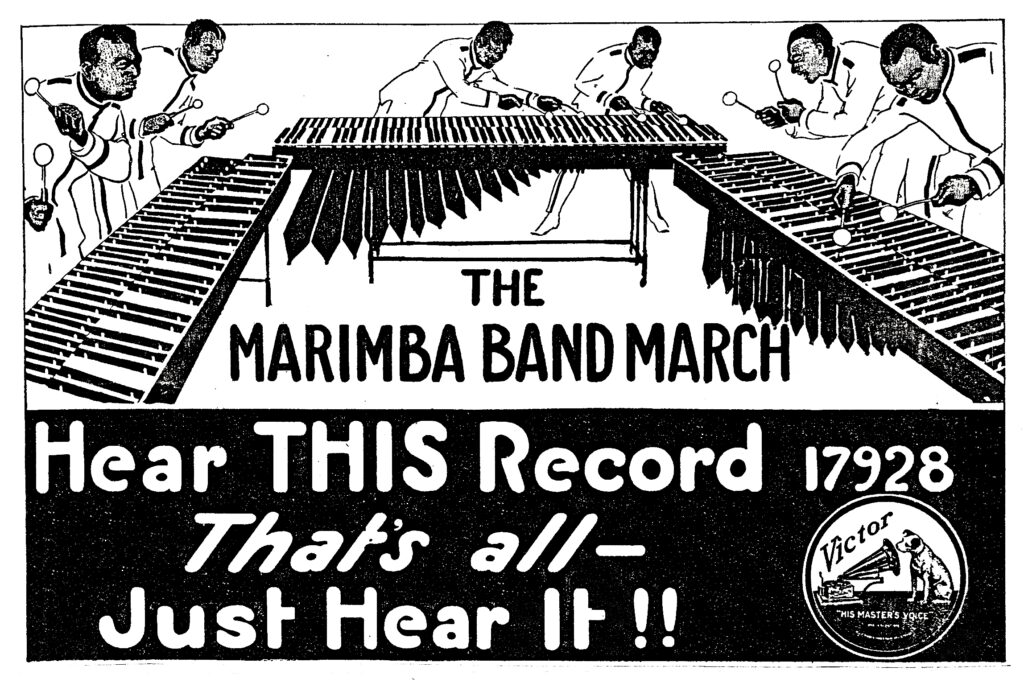In August 2023 I received a request from Amy Racic, the Video Producer for the Percussive Arts Society, asking for “a short self recorded video interview to use as part of their 2023 Percussive Arts Society Hall of Fame induction video” on the Hurtado Brothers Royal Marimba Band of Guatemala, who were to be inducted into the PAS Hall of Fame at the Indianapolis PASIC in November. On August 31 I transferred my video to Amy to be included – in whole or in part – to the induction video comprised of a compilation of videos by a number of submissions. The final compilation video can be viewed at:
https://vimeo.com/885293045
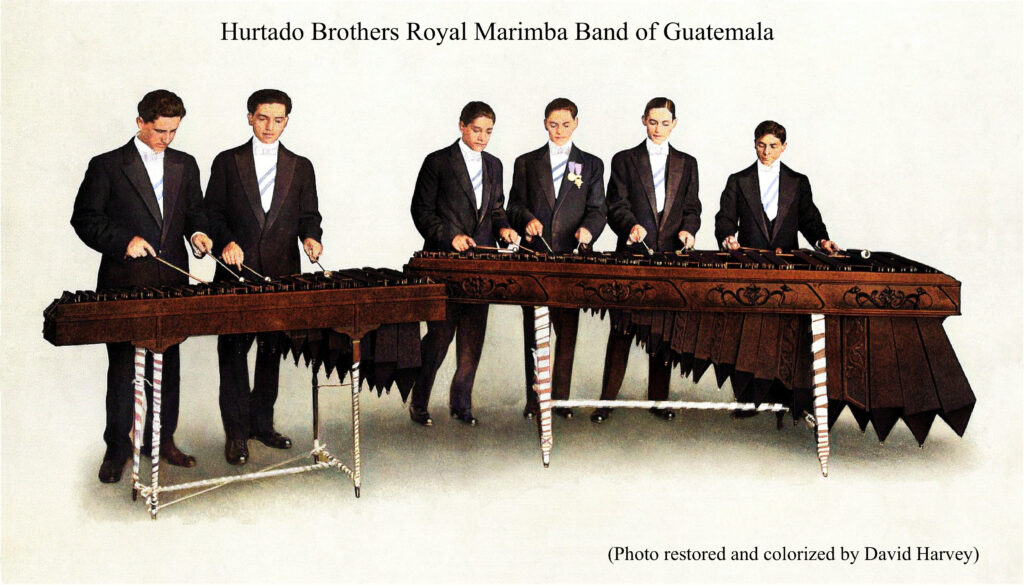
Here is the full text of my 4-1/2-minute video, along with a few photos
I am pleased to offer a few words about the Hurtado Brothers Royal Marimba Band of Guatemala, in recognition of their 2023 induction into the Percussive Arts Society Hall of Fame.
In the late 1970s, I unexpectedly found an old Victor record by George Hamilton Green and purchased it for 25-cents. I was so fascinated by the artistry of the xylophone playing, that I spent the next 10-years searching and buying hundreds of records made between 1900 and 1929 by Green and many other xylophonists.
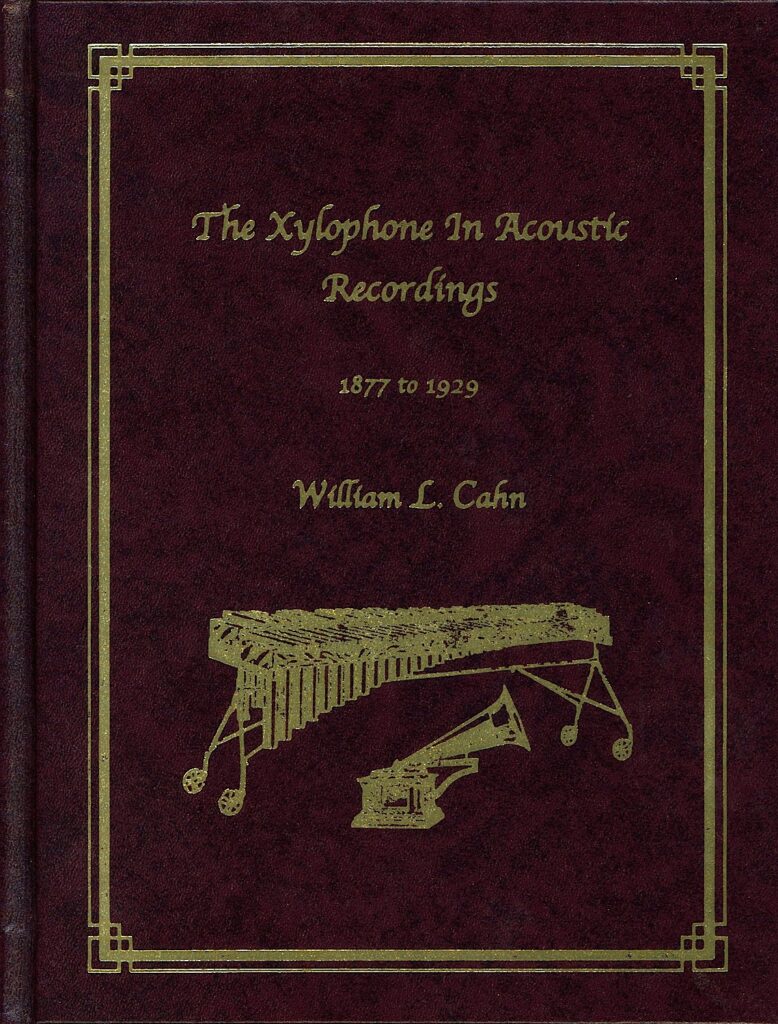
The full collection of over a thousand recorded titles is now archived at the Wells-Rapp Center for Mallet Percussion Research at Kutztown University in Pennsylvania.
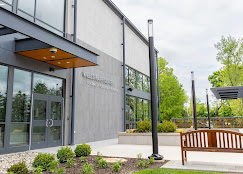
In an effort to identify as many records as possible made prior to 1930 that featured a xylophone or other keyboard percussion instrument, in 1979 I wrote and published a 284-page discography titled, The Xylophone In Acoustic Recordings – 1877 to 1929.
Among the records in my collection were 26 titles recorded by the Hurtado Brothers. The music you are hearing is “El Choclo – Argentine Tango,” a 78-rpm acoustic disc recorded in February 1917 on the Victor label.

The New Victor Records magazine for March 1917 announced the release of this record saying, (quote) “The marimba is of African origin, but it has been developed . . . in Guatemala. El Choclo Argentine is typically South American, and in listening to it, one is quickly transported to colorful lands south of the Equator.”
In the early 2000s the Guatemalan musician, Sebastián Hurtado (1821-1913) helped to redesign the traditional one-row Guatemalan marimba into a 2-row instrument, with the bars in a piano keyboard arrangement. In 1908, along with his sons, Sebastián toured with his marimba band in the United States, successfully introducing the marimba to audiences unfamiliar with the instrument.
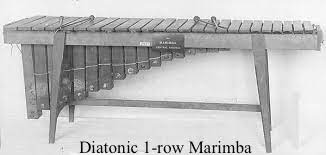
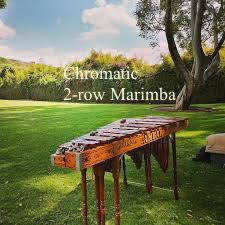
Sebastián’s son, Celso, later named the ensemble as “La Marimba Royal De Los Hermanos Hurtado,” and in 1915 Celso and the Marimba Band performed at the International Panama-Pacific Exhibition in San Francisco, where they won the exhibition’s Gold Medal, along with a Columbia Records contract for a series of double-sided discs, which they recorded later that same year.
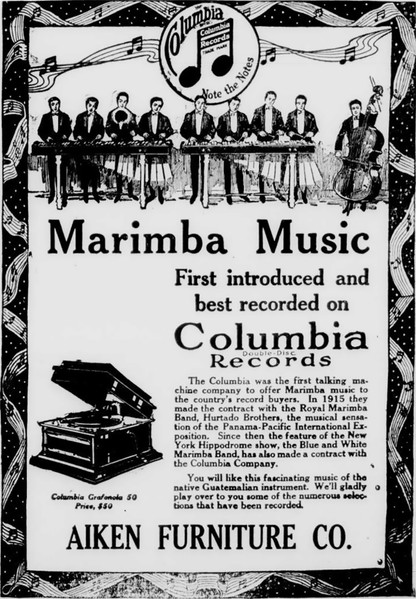
The Marimba Band’s tour concerts and records were very popular, and from 1916 to 1923, they made more records on the Victor label. Their 1916 recording of “Pique Dame” on the Victor label sold 500,000 copies, and led to a performance at the “Ziegfeld Follies” in 1919. In 1925 the Hurtado Brothers (Joaquín, Celso, Jesús, and Óscar) moved permanently to New York City.
As you can hear by listening to their music, the Royal Marimba Band’s playing style was musically elegant, with tight ensemble playing, well-shaped nuanced phrasing, and refined ‘dead’ strokes, for which each mallet remains in contact with the bar after striking it for a dry staccato sound.
By the late 1930s, with the emergence of Jazz, Swing and other popular musical styles in America, the music of the Hurtado Brothers Royal Marimba Band of Guatemala faded from the public’s awareness and musical taste. Today their contribution to the development of keyboard percussion performance has largely been forgotten, so it is entirely appropriate that they receive the honor of being inducted by musicians of the present day into the PAS Hall of Fame.
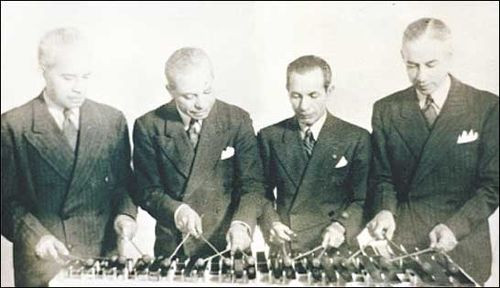
The Hurtado Brothers (Joaquín, Celso, Jesús, and Oscar)
On November 18, 2023 I received the following message from David Harvey, whom I have known for decades as a dedicated researcher into the history of keyboard percussion instruments and performance, and who is currently affiliated with the Wells-Rapp Center for Mallet Percussion Research at Kutztown University in Pennsylvania:
“I also would like to acknowledge that you are the percussionist who first discovered the Hurtado’s back in the 1970s through your record collecting and pioneering discographical work. The first time I heard of the Hurtado’s was in an article of yours published in the PAS research journal, The Percussionist, around 1979, which was an outline of a live demonstration you had recently presented on the subject of the xylophone in acoustical recordings. I am unaware of any percussionist who made reference to the Hurtado’s prior to that article, and your ensuing discography.
So, there is a clear and unambiguous path from your discovery and public awareness efforts about the Hurtado’s to the percussion community, through to and culminating in the PAS HOF induction last week. On behalf of marimbists everywhere, I thank you for your efforts documenting mallet percussion history, and for this culturally significant Hall of Fame achievement. Without your pioneering work so many years ago, I do not think we would have experienced what just occurred in Indianapolis.”
